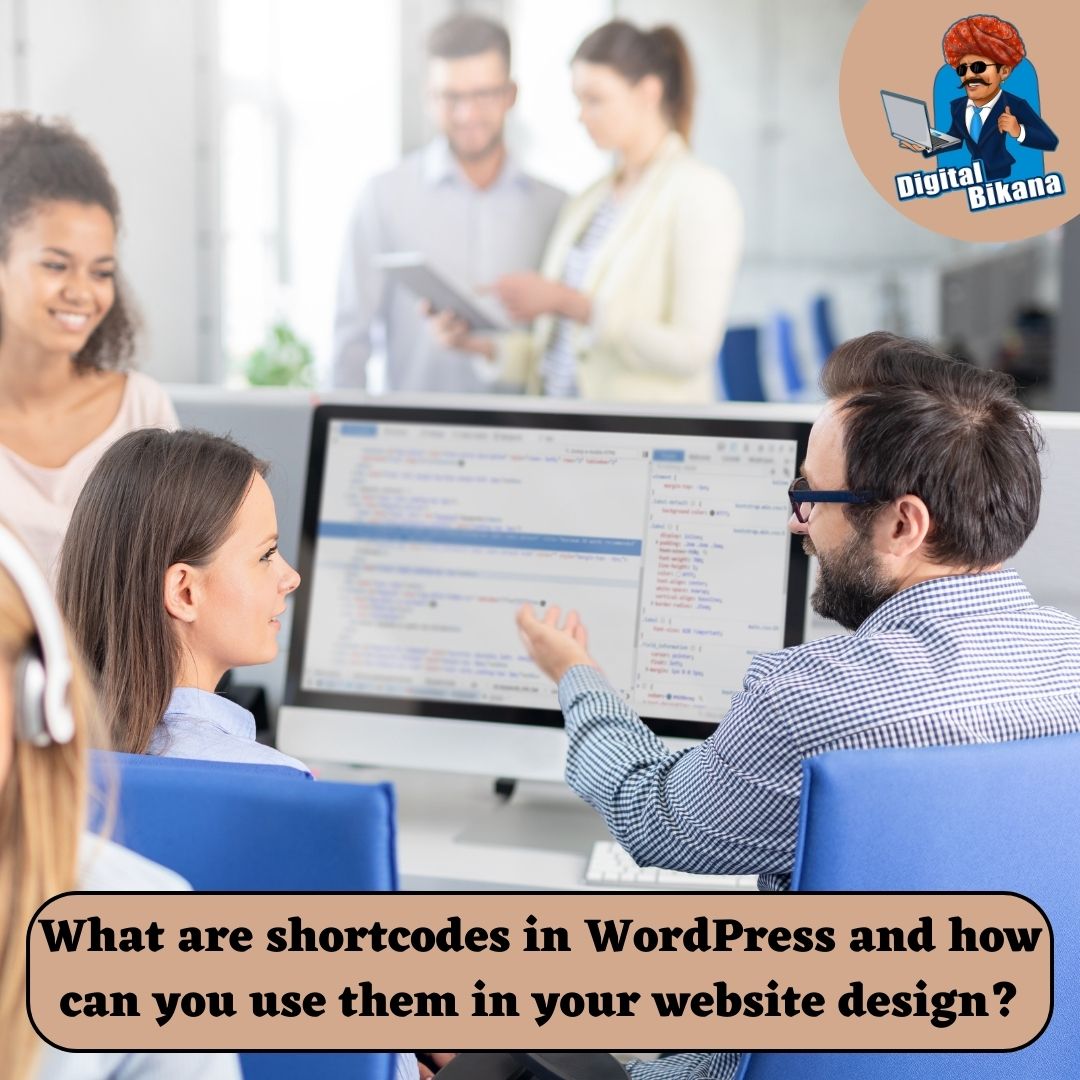What are Shortcodes in WordPress and how can you use them?
In this article we are going to talk about What are Shortcodes in WordPress and how can you use them in your website design? In the dynamic world of WordPress, shortcodes serve as invaluable tools for website designers and developers, enabling them to effortlessly add dynamic elements and enhance the functionality of their websites. Shortcodes are simple code snippets enclosed in square brackets that execute specific functions when embedded within a page or post.
What are Shortcodes in WordPress and how can you use them in your website design?
This article aims to provide a comprehensive understanding of shortcodes, their significance in WordPress website design, and how you can leverage their power to create captivating and interactive user experiences.
Understanding Shortcodes
Shortcodes are essentially placeholders that allow users to insert pre-defined functions or dynamic content into their WordPress pages or posts without writing complex code. They act as shortcuts, reducing the need for manual coding and streamlining the process of adding advanced features or executing custom functions.
In WordPress, shortcodes are enclosed within square brackets, typically with a name or attribute, like so: [shortcode_name]. When the WordPress engine encounters a shortcode within a page or post, it replaces it with the corresponding code output, providing dynamic content or executing specific actions.
Types of Shortcodes
1. Content Shortcodes
These shortcodes are primarily used to display dynamic content, such as galleries, sliders, videos, buttons, and testimonials. They enable website owners to incorporate rich media elements without the need for extensive coding.
2. Function Shortcodes
Function shortcodes execute specific functions or processes on the website. For instance, a contact form shortcode can trigger a form submission process, while a login shortcode can display a login form for users.
3. Plugin Shortcodes
Many WordPress plugins provide their own shortcodes, extending the functionality of websites. These shortcodes allow users to incorporate plugin features directly into their content, offering seamless integration of various elements.
Using Shortcodes in WordPress
1. Finding and Implementing Shortcodes
Most shortcodes are provided by plugins or themes. When using a shortcode, check the associated documentation or support resources to understand the shortcode’s syntax and available attributes. Once you have the shortcode details, simply add it to your page or post editor using the square bracket format.
2. Customizing Shortcodes
Many shortcodes offer customizable attributes, allowing you to fine-tune their behavior. For example, a gallery shortcode might have options for the number of images, layout style, or autoplay settings. Explore the documentation or settings provided by the plugin or theme to customize the shortcode according to your requirements.
Read Also: How can you add an e-commerce functionality to a WordPress website?
3. Combining Shortcodes
Shortcodes can be combined to create complex and interactive elements. For instance, you can combine a video shortcode with a lightbox shortcode to create a responsive video gallery. Feel free to try out different combinations to achieve the results you want.
Benefits of Shortcodes
1. Efficiency and Ease of Use
Shortcodes eliminate the need for manual coding, enabling users with limited technical expertise to add advanced functionality to their websites effortlessly.
2. Consistency and Portability
Shortcodes ensure consistent implementation across different pages and posts. If you decide to change themes or plugins, the shortcodes will remain intact, minimizing the risk of broken functionality.
3. Time and Resource Savings
By leveraging shortcodes, designers and developers can significantly reduce development time and effort, allowing them to focus on other critical aspects of website design.
Read Also: What are Breadcrumbs and How can you implement them in a WordPress Website?
Best Practices for Using Shortcodes
1. Research and Documentation
Before using a shortcode, thoroughly research its documentation and understand its capabilities and available attributes. This will help you make the most of the shortcode and avoid any potential conflicts or issues.
2. Theme and Plugin Compatibility
Ensure that the shortcodes you choose are compatible with your WordPress theme and plugins. Incompatible shortcodes may not work as expected or may cause conflicts that affect your website’s functionality.

3. Regular Updates and Maintenance
Keep your shortcodes, plugins, and themes up to date to ensure optimal performance and security. Regularly check for updates and apply them promptly to avoid any vulnerabilities or compatibility issues.
4. Test and Preview
Before making shortcodes live on your website, test them in a staging or development environment. Preview the output and ensure that they function as intended and align with your design goals.

Conclusion
Shortcodes are indispensable tools in WordPress website design, empowering users to enhance their website’s functionality without delving into complex coding. By leveraging shortcodes, designers and developers can add dynamic content, execute custom functions, and create engaging user experiences effortlessly. Explore the world of shortcodes, experiment with their vast possibilities, and unlock the true potential of your WordPress website. So, Now I hope you have understood about Shortcodes in WordPress and how can we use them in our website design.
You can also checkout this website designing institute to learn digital marketing course by enrolling in our course Or Contact Digital Bikana on +91-8949483728

